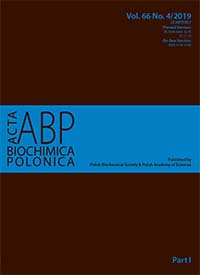Light-regulated synthesis of extra- and intracellular enzymes related to wood degradation by the white rot fungus Cerrena unicolor during solid-state fermentation on ash sawdust-based medium
Abstract
The light-dependent metabolism of the white rot basidiomycete Cerrena unicolor FCL139 has already been demonstrated using transcriptomic and Biolog-based approaches. To further analyze the influence of light on C. unicolor wood degradation, we measured the activity of an array of CAZymes (carbohydrate-active enzymes) and enzymes involved in the redox system of fungal cells associated with lignolysis. Extra- and intracellular enzymatic extracts were obtained from solid-state ash sawdust C. unicolor cultures cultivated for 14 days under red, blue, green, or white light conditions, or in the dark. Light greatly influenced the synthesis of MnP, total cellulases, endo-1,4-β-glucanase, endo-1,4-β-xylanase, catalase, and superoxide dismutase. The production of MnP and catalase was evidently stimulated by white light. It is also worth noticing that blue light caused a gradual increase in the activity of total cellulases throughout the entire period of C. unicolor growth. Moreover, endo-1,4-β-glucanase showed the highest activity on day 13 of fungus cultivation and the production of laccase and β-glucosidase appeared to be the least influenced by light. However, the strongest activity of the endo-1,4-β-xylanase was observed in the dark. It seemed that light not only influenced the regulation of the synthesis of the wood-degrading enzymes at different levels, but also acted indirectly by affecting production of enzymes managing harmful lignin by-products causing oxidative stress. The ability of the fungus to decompose woody plant material is clearly influenced by environmental factors.
Acta Biochimica Polonica is an OpenAccess quarterly and publishes four issues a year. All contents are distributed under the Creative Commons Attribution-ShareAlike 4.0 International (CC BY 4.0) license. Everybody may use the content following terms: Attribution — You must give appropriate credit, provide a link to the license, and indicate if changes were made. You may do so in any reasonable manner, but not in any way that suggests the licensor endorses you or your use.
Copyright for all published papers © stays with the authors.
Copyright for the journal: © Polish Biochemical Society.


